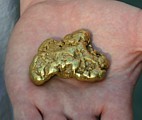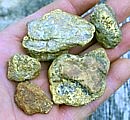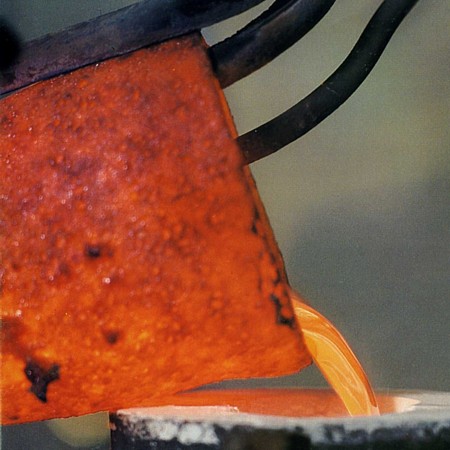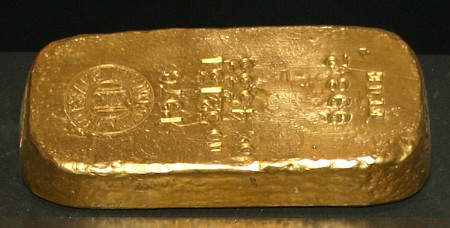How To Melt Gold Fines
and
Gold Or Silver Jewelry Scrap

.

How To Melt Gold Fines
and
|
 |
||
|
. |
Interested in melting down your gold and/or silver to pour a button or bar? Gold miners often recover some very small sized gold and it is much easier to handle once it is melted down into a single button or bar. Scrap jewelry gold can be handled the same way and melted down onto a single piece. We work hard to capture the gold and we don't want to loose any of that fine gold away as it can be valuable. There are a lot of different options, and in the article below I'll take a look at all of the best known possibilities for melting gold. Take a look at the following information....... |
 |
|
| Many prospectors acquire fine sized gold in one form or another. Fines from panning, sluicing or dredging, fine gold from amalgamation, electro-winning or other chemical process, or even scrap gold collected from metal detecting are all categories which prospectors may wish to melt down to pour into a solid bar or button form for storage or sale to a refiner. Melting down gold is not particularly difficult, but there are a few things it is helpful to be aware of concerning this procedure, so that you do not get into problems. | ||
| Many natural forms of gold contains impurities, so a flux is
required to collect them and remove them from the gold. The more impurities which are
present, the more the amount of flux that is required. Some small amount of flux should be
used even when the material appears clean. The descriptions I am making are
for melting fairly clean gold, not ore specimens or sulfide minerals. Ore
specimens with lots of quartz, pyrites or other minerals requires
a different approach. Ore specimens that are just quartz and gold can be crushed
and the quartz panned away. Once the gold is fairly clean and dry, it can be
melted by the methods described on this web page. Fluxes also help to hold together fine gold particles and keep the torch from blowing them away. Never indiscriminately bring a torch down onto fine powdered gold in a crucible as you can easily blow hundreds of dollars worth of gold right out of the crucible. Wind speeds from a torch in a crucible can easily blow gold around, so be sure to add a protective layer of pure flux, such as borax, on top of the fine gold flux mix. Then bring the torch down slowly, allowing the torch to slowly and gently melt the top layer so it will spread out and protect the gold bearing layer below from blowing out of the crucible. In addition, heating the crucible too fast may also damage it by cracking, so take it easy and don't go too fast in your heating. Pure gold melts at 1060 C or 1940 F, and this a good bright red heat. More or less of other metals alloyed with your gold such as silver or copper may raise or lower the melting point a bit. 14 K Gold, varies because there are many 14 K gold alloys, but a typical melting temperature for 14 K is about 1650 F. A fairly powerful torch, such as an oxy-acetylene unit will be required. Mapp gas can be used for small amounts like just a few grams. Propane torches as you might use for melting solder on copper pipes are often not sufficient. Melting can also be done in a furnace, so long as the requisite hot temperatures can be reached. I actually even had someone ask me about melting gold with a Fresnel type magnifying glass. These are the same lenses that are used on overhead projector. You can melt gold with a lens, but it needs to be a very large lens and you can only melt a tiny button. |
 |
|
| There are many different formulas for flux mixtures, but for simple melting of clean gold fines, a mixture of borax and sodium carbonate works fine. In some cases, a small amount of some very fine silica sand or ground up bottle glass can be added, but that is usually unnecessary. I would add about two big pinches per ounce with clean jewelry scrap, more for dirty scrap. Regular standard baking soda / bicarbonate purchased from the store (not baking powder) when heated forms Sodium Carbonate which is a major flux for melting gold. If you heat it too fast it will bubble as it converts to the carbonate. I'd use 4 pinches with each ounce of clean placer scrap, more with dirty placer materials. that would be in addition to any cover layer of flux you might need. Also, don't add any lead compounds as would be added for assay fluxes. This is not an assay, so lead is not needed and is undesirable. Lead may convert to the metal, allow with your gold and dilute it. Generally you don't want to accidently add lead or any other base metals to your gold. | ||
The crucibles used for melting your gold must stand up to the fluxes being used, and crucibles made of Graphite carbon are the most common type used. Borax fluxes can dissolve and eat eat through the walls of many ceramic type crucibles and you don't want to spring a hole in the side of your crucible when you gold is molten and red hot. That situation could be both very costly and highly dangerous! This is part of why you don't want to use large amounts of borax, just a little is fine. Graphite crucibles of the right size are available at many rock shops which have supplies for jewelry casting. Graphite is resistant to borax. Folks who melt metals to cast gold and silver jewelry use the same types of crucibles and fluxes as you will want to use. There are many possibilities for shapes and molds to pour your gold into. The simplest are open molds such as brick or bar type molds. Some folks use the depression of a cupel from fire assay processes to create small buttons. The cupels will absorb any excess of the flux which was used, and are just the right size for pouring small buttons. |
 |
|
| It is even possible to use lost wax casting to
pour your gold into peculiar shapes. Little miners, eagles, gold picks made of real gold
are all possibilities - and of course the more standard jewelry. The art of lost wax
casting is a whole field of study in and of itself. A wax model of the cast to be made is
produced, a sprue (one or more) is attached and the whole thing set in a special type of
plaster of Paris. The wax model is set such that the sprue comes to the surface. When the
plaster and wax set up is heated, the wax melts and vaporizes, leaving a void the shape of
the model. Gold or silver is poured into the sprue such that it fills the void in the
plaster, making a gold or silver version of the original wax model. High purity gold, such as placer fines should not be used in jewelry without the addition of copper and silver to increase hardness and durability. In addition, it is necessary with some raw gold mixes to add extra flux to clean, capture and remove impurities. Any gold alloys in jewelry and other lost wax projects must have good flow properties so that they can be properly cast. |
||
Want to know a little bit more about this crazy prospector guy? Well, here's a little bit more about me, and how I got into prospecting: Chris' Prospecting Story Interested in seeing more gold? Here are some interesting photos of beautiful Gold Nuggets